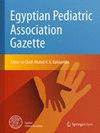连续输注速尿与反复注射速尿对左向右分流婴儿急性失代偿性心衰的治疗:一项随机试验
IF 0.5
Q4 PEDIATRICS
引用次数: 0
摘要
摘要背景速尿是治疗急性失代偿性心力衰竭(ADHF)的首选药物。传统上,它被反复静脉注射,但除了可能有毒性外,还注意到血管内体积和血压的波动。因此,持续静脉输注被认为是另一种给药途径。在检索文献时,所有先前发表的关于儿科年龄组的数据都是针对婴儿和心脏手术后的儿童。本研究旨在比较呋塞米反复注射与持续输注治疗左向右分流婴儿ADHF的疗效和安全性。方法对54例继发于左向右分流的Ross IV型ADHF患儿进行前瞻性平行设计随机研究。27例患儿重复注射呋塞米,27例患儿连续输注呋塞米。临床随访患者体重、尿量、衰竭症状消退所需时间、血清肌酐、钠和钾以及住院时间。结果两组患者入院前口服速尿剂量及血清肌酐水平无显著差异。连续输注组尿速胺的日剂量较低(3.5±0.6 vs 4.7±1.0,p = 0.001),尿量波动较小,缓解失败症状所需的时间显著缩短(42.1±9 vs 56±18.5,p = 0.001)。尿速脲输注结束时,连续输注组血清肌酐显著高于对照组(0.39±0.06 vs 0.34±0.1,p = 0.030)。出院前两组比较差异无统计学意义(0.32±0.05 vs 0.33±0.06,p = 0.584)。两组患者注射呋塞米结束时血清钠、钾水平差异无统计学意义(p分别为0.289、0.890)。结论连续输注速尿可安全用于继发于左向右分流的Ross IV级ADHF患儿,临床症状逐渐减轻,血流动力学不稳定性较反复输注低。该研究于2016年8月3日获得曼苏拉医学院机构研究委员会(MS/16.02.41)批准。本文章由计算机程序翻译,如有差异,请以英文原文为准。
Furosemide continuous infusion versus repeated injection in the management of acute decompensated heart failure in infants with left to right shunt: a randomized trial
Abstract Background Furosemide is the foremost drug used in the management of acute decompensated heart failure (ADHF). By tradition, it was administered as repeated intravenous boluses but fluctuations in intravascular volume and blood pressure were noticed in addition to the possibility of toxicity. Hence, continuous intravenous infusion was thought of as an alternative route of administration. In searching the literature, all previously published data concerning the pediatric age group was for infants and children following cardiac surgery. This study aims to compare the efficacy and safety of furosemide repeated injection versus continuous infusion during the management of ADHF in infants with left to right shunt. Methods A prospective parallel-design randomized study was conducted on 54 infants with ADHF, Ross class IV, secondary to left to right shunt. Twenty-seven infants received repeated injections of furosemide and 27 infants had furosemide continuous infusion. Patients were followed clinically for weight, urine output, hours required for resolution of failure symptoms, serum creatinine, sodium and potassium, and length of hospital stay. Results Non-significant differences were observed between both groups regarding preadmission oral furosemide dose and serum creatinine level. A lower daily dose of furosemide was observed in the continuous infusion arm (3.5 ± 0.6 vs 4.7 ± 1.0, p = 0.001) with less fluctuation in urine output and significantly fewer hours required for resolution of failure symptoms (42.1 ± 9 vs 56 ± 18.5, p = 0.001). At the end of furosemide infusion, serum creatinine was significantly higher in the continuous infusion group (0.39 ± 0.06 vs 0.34 ± 0.1, p = 0.030). However, before hospital discharge, non-significant differences were noticed (0.32 ± 0.05 vs 0.33 ± 0.06, p = 0.584). Non-significant differences between both groups regarding serum sodium and potassium levels at the end of furosemide injection were detected ( p = 0.289, 0.890, respectively). Conclusion Continuous infusion of furosemide can be safely administered to infants with ADHF, Ross class IV, secondary to left to right shunt with clinical gradual alleviation of fluid overload symptoms and less hemodynamic instability than repeated injections. Trial registration The study was approved by the Mansoura Faculty of Medicine institutional research board (MS/16.02.41) on August 3rd, 2016.
求助全文
通过发布文献求助,成功后即可免费获取论文全文。
去求助
来源期刊

Egyptian Pediatric Association Gazette
PEDIATRICS-
自引率
0.00%
发文量
32
审稿时长
9 weeks
期刊介绍:
The Gazette is the official journal of the Egyptian Pediatric Association. The main purpose of the Gazette is to provide a place for the publication of high-quality papers documenting recent advances and new developments in both pediatrics and pediatric surgery in clinical and experimental settings. An equally important purpose of the Gazette is to publish local and regional issues related to children and child care. The Gazette welcomes original papers, review articles, case reports and short communications as well as short technical reports. Papers submitted to the Gazette are peer-reviewed by a large review board. The Gazette also offers CME quizzes, credits for which can be claimed from either the EPA website or the EPA headquarters. Fields of interest: all aspects of pediatrics, pediatric surgery, child health and child care. The Gazette complies with the Uniform Requirements for Manuscripts submitted to biomedical journals as recommended by the International Committee of Medical Journal Editors (ICMJE).
 求助内容:
求助内容: 应助结果提醒方式:
应助结果提醒方式:


